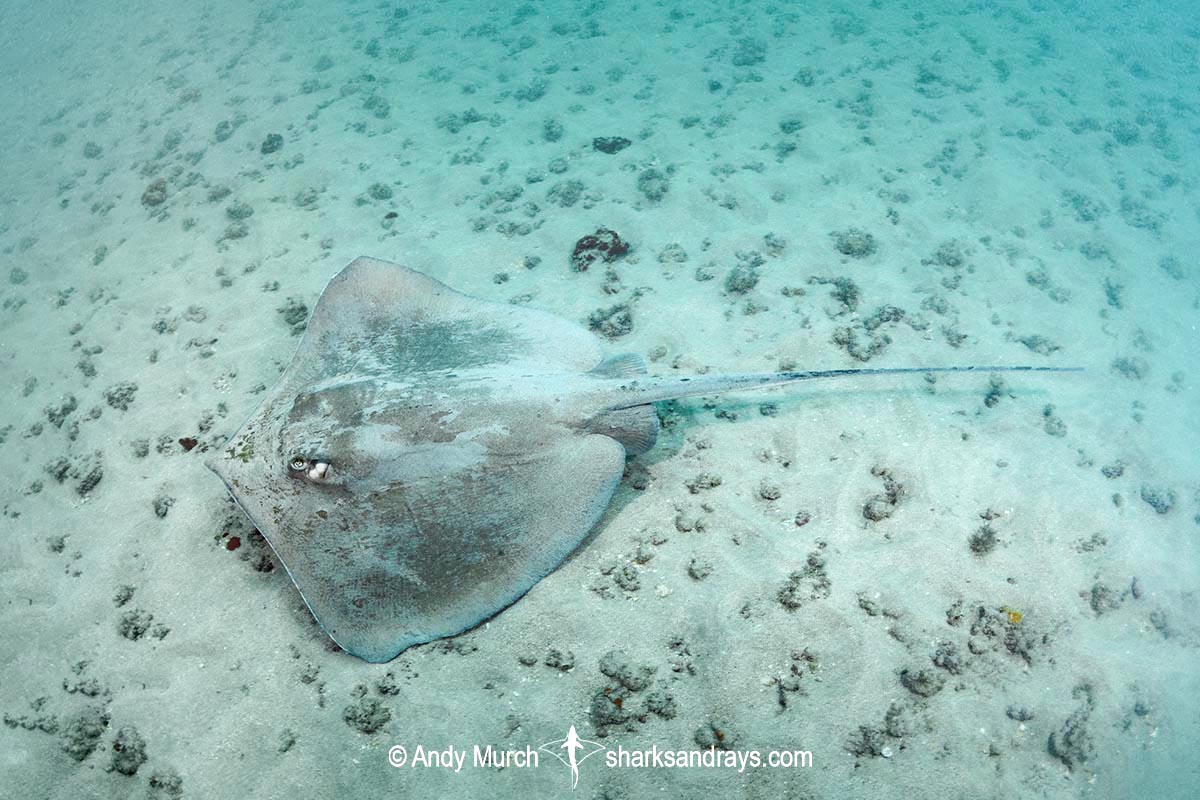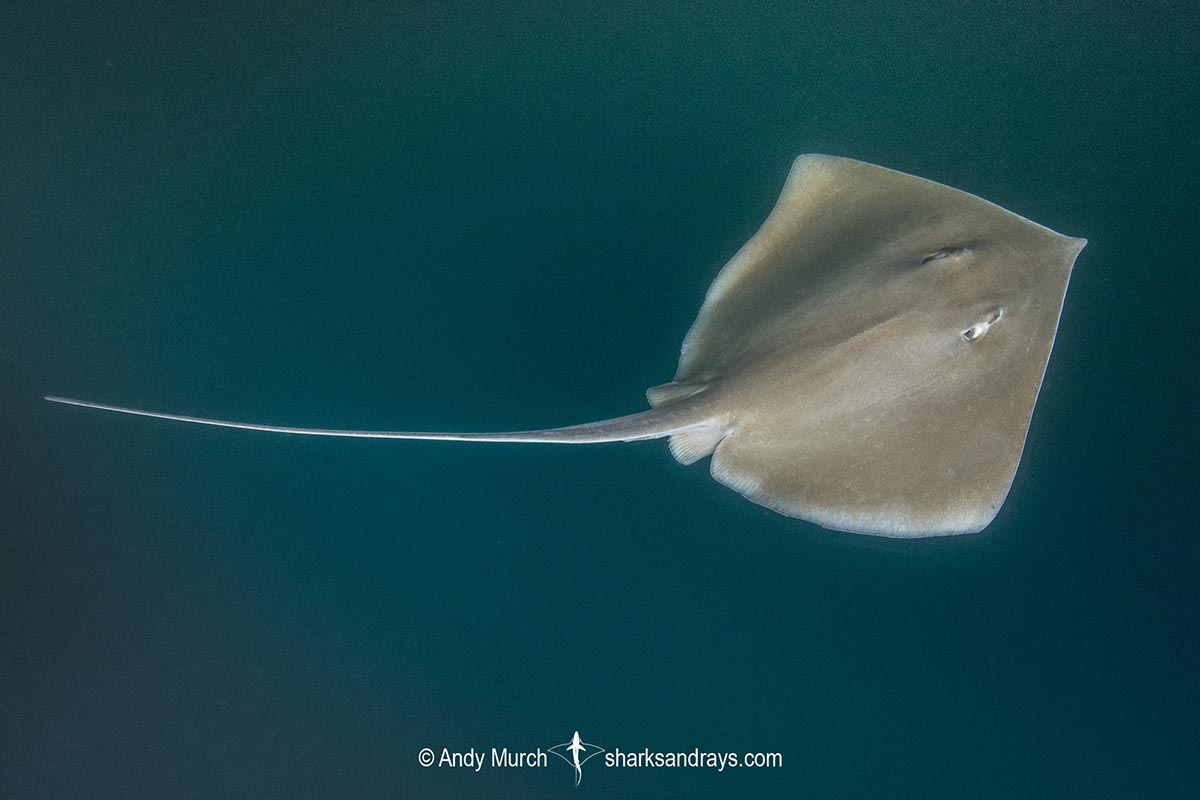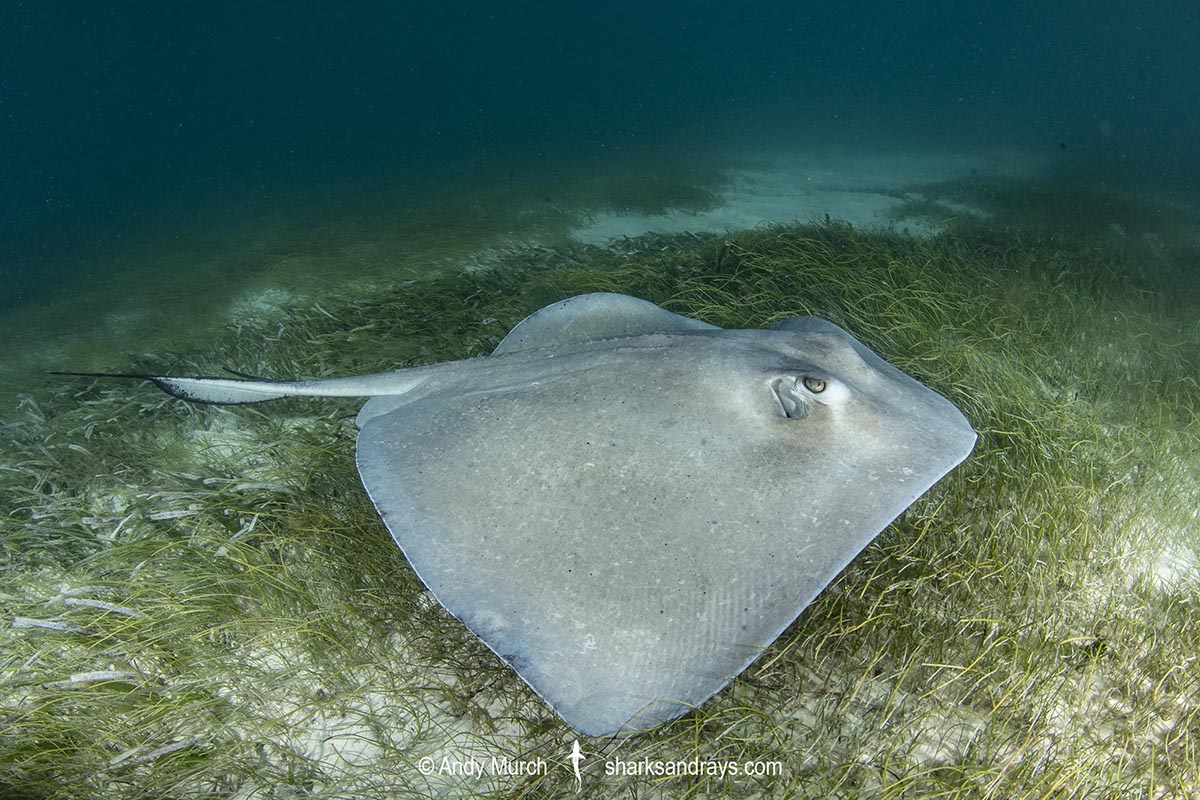Common name(s)
Longnose Stingray.
Binomial
Hypanus guttatus.
Synonyms
Dasyatis guttata, Dasyatis guttatus, Raja guttata, Raja tuberculata, Trygon jabebara, Trygon osteosticta.
Identification
A very large stingray with a kite-shaped disc that is slightly wider than long; disc width approximately 1.1 x length. Snout elongate, with a tightly rounded tip. Anterior margins of disc straight, weakly concave, or sinuous. Pectoral fin apexes tightly rounded to angular. Pelvic fins small with narrowly rounded apexes.
Eyes small. Snout length 2.5-2.9 x combined eye and spiracle length.
Mouth narrow with 3 oral papillae. Prominent labial furrows and folds around mouth. Lower jaw concave at symphysis. Skirt shaped nasal curtain with a weakly fringed margin. Nostrils thin.
Band of heart-shaped denticles on central disc. A row of thorns extend along midline from nape to caudal sting. Thorns on tail greatly elongated and spear shaped. 1-2 thorns on each shoulder; sometimes absent. Tail narrow based, round in cross section, tapering gently to caudal sting, then thin and whiplike to tip. Tail length (when intact) approximately 2.5-3 x disc width. Dorsal fold reduced to a ridge. Ventral finfold long and thin; length roughly equal to 1.5x distance from cloaca to caudal sting origin. One tail sting usually present.
Colour
Dorsum tan or olive-brown, sometimes with darker spots. Ventrum white or yellowish. Tail beyond caudal sting often dusky. Ventral fin fold dark.
Size
Maximum disc width 180cm, possibly 200cm. Disc width at birth 15cm.

Conservation Status
NEAR THREATENED
The longnose stingray is captured in gillnets and beach seines, and trawl fisheries. This species is targeted by intensive artisanal fisheries and unmanaged commercial fisheries along much of the South American coastline.
The Longnose Stingray has undergone a population reduction of 30–49% over the past three decades in Atlantic South America but declines further north are probably small.

Habitat
Tropical/sub-tropical seas. On sandy or muddy substrates, sometimes adjacent to rocky reefs. From brackish intertidal areas to at least 70m.
Distribution
Southern Gulf of Mexico, Caribbean Sea, and southwest Atlantic to southern Brazil.
Reproduction
Matrotrophic aplacental viviparity. Litter size unknown. Nursery areas have been identified off northeastern Brazil on sandy banks and rocky reefs (Yokota and Lessa 2006).
Diet
Diet includes echinoderms, worms, molluscs, crustaceans, and small fishes.
Behavior
Sedentary; spends much of its time resting on the substrate.
Reaction to divers
A shy species that is generally difficult to approach.
Diving logistics
Longnose stingrays are present as far north as the Gulf of Campeche but are rarely encountered in Mexico.
Although this ray is quite common along the east coast of Central America, it is not particularly easy to track down due to the lack of coastal dive shops on the mainland. It is seen on occasion by coastal dive shops in Guatemala and Honduras.
It is relatively easy to find around shallow reefs off of the city of Natal in northern Brazil.
A known nursery area for longnose stingrays exists off the beaches of Caiçara do Norte in northeastern Brazil, where newborns and small juveniles have been reported from water no more than 3 m (9.8 ft) deep from February to October.
What’s new
View our full list of updates
Similar species
Roughtail Stingray Distinguished by more rounded snout and thicker, thornier tail.
Southern Stingray Distinguished by shorter more obtusely angled snout and shorter, wider tail.







